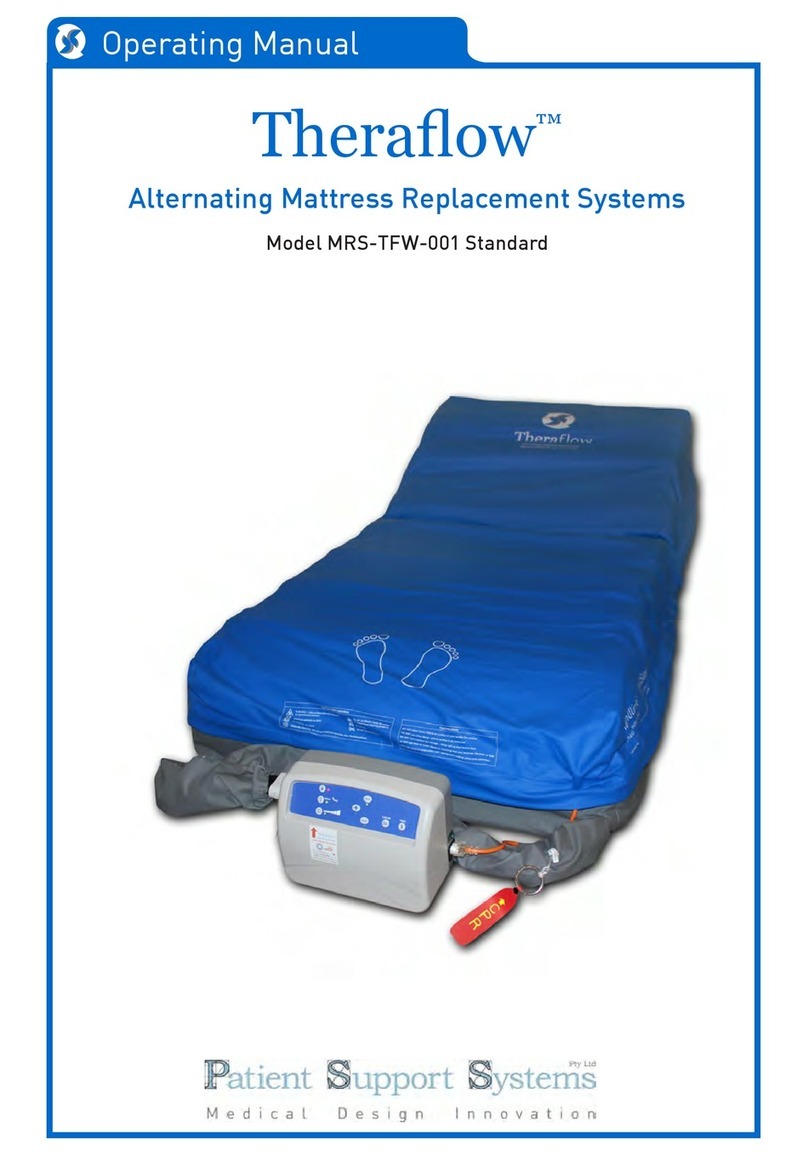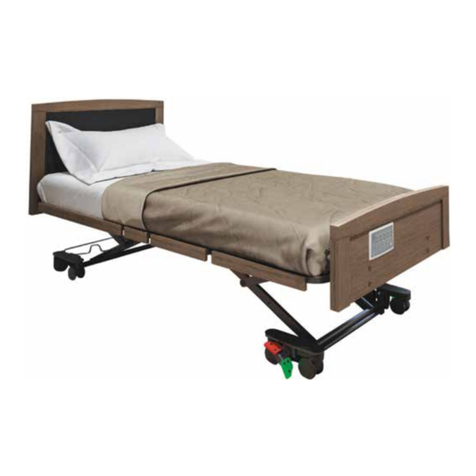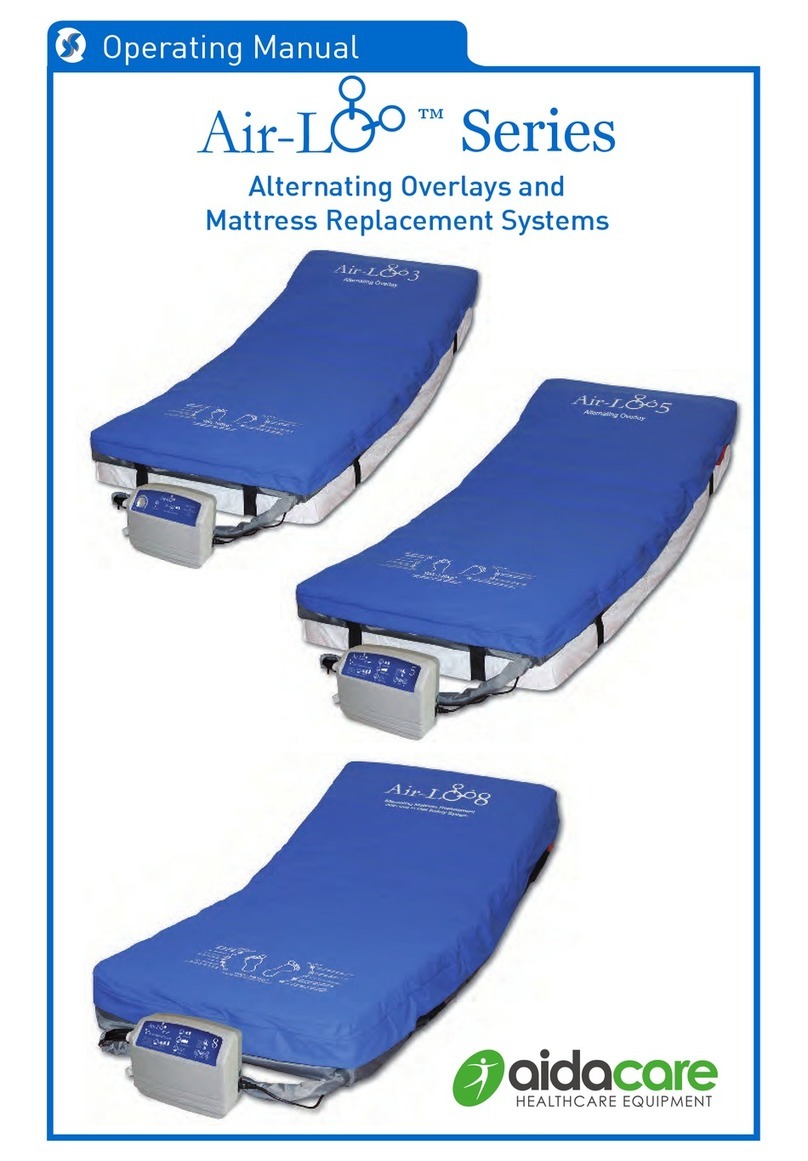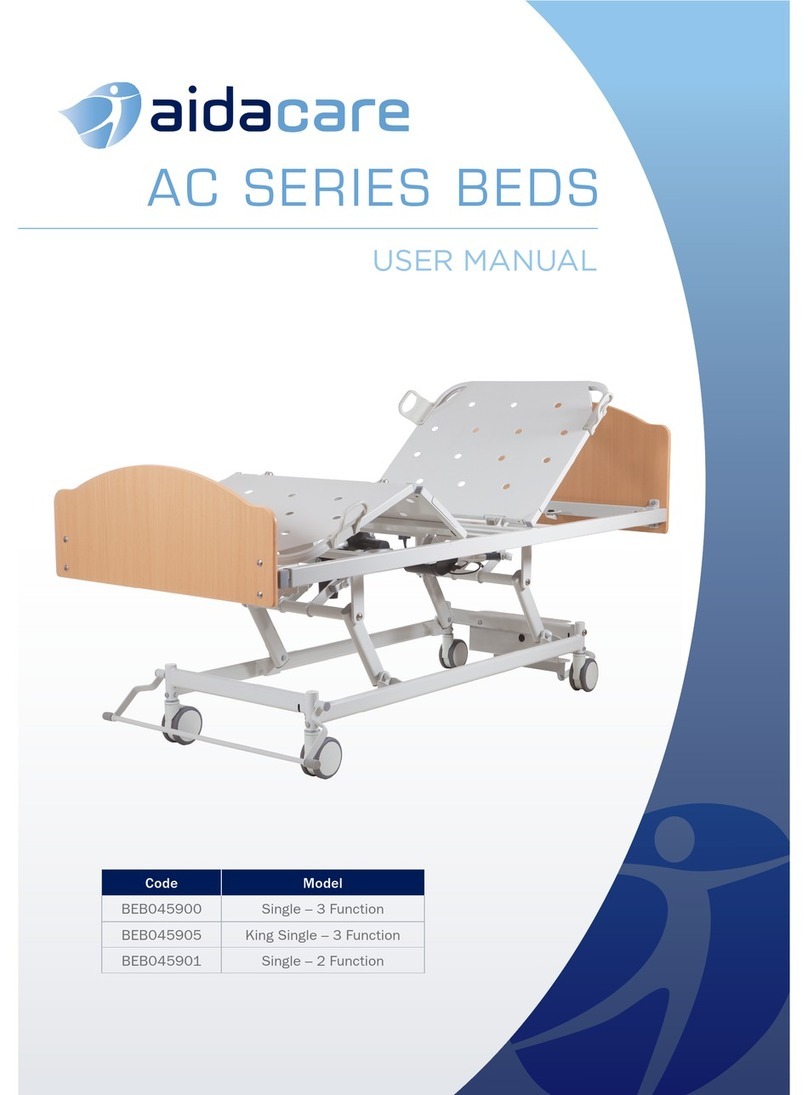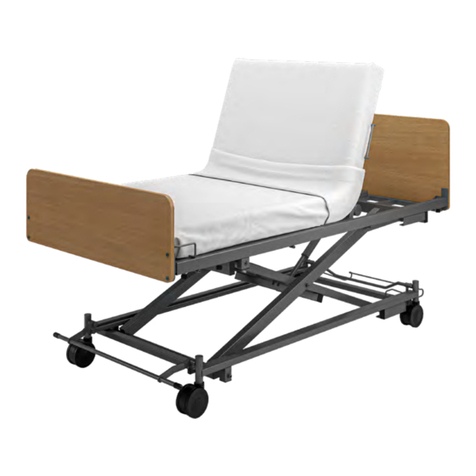4.1 (A) REMOVABLE MATTRESS
PLATFORM PANELS
The bed has removable mattress platform panels for
easy cleaning and infection control management.
Removing Mattress Panels
Panels are easily removed, without tools, by releasing
the sprung tabs that wrap around under the frame. To refit panels, line up cutouts
with the under frame supports and push down until the sprung plates “click” into
place. Take care to ensure fingers are clear when refitting to avoid entrapment.
4.1 (B) OPTION: UNIVERSAL SIDE RAILS
Horizontal Universal Side Rails are available as an
optional accessory to assist with patient safety. They
have two positions, either fully raised or fully down.
When the side rail is raised to its full height position, it
will automatically lock in place with an audible click.
Fitting Universal Side Rails
NOTE: The rails are a left and right hand set and when fitted correctly fold down
towards the foot end of the bed.
1. Before fitting the rails unscrew the hand wheel to bring the locking clamp into an
open neutral position which will allow the rail to fit over the side rail of the bed.
3. ELECTRONIC FUNCTIONS (CONT.)
3.6 TILT POSITIONING
Trendelenburg/Reverse Trendelenburg
The tilt button allows the bed to be positioned in a foot or head
down tilt position. Tilt positioning achievable is between 0° and 14°
for both head and foot down tilting.
CAUTION: The Trendelenburg function should only be used under
professional supervision.
• In use the mattress platform may initially rise before tilting. The bed will
automatically adjust to ensure there is sucient clearance between the mattress
platform and the mechanical structure of the bed before tilting.
• When reversing the tilt angle of the bed with the tilt button remaining depressed,
the mattress platform will pause at horizontal for two seconds before continuing
on with its tilting movement.
3.7 BATTERY BACKUP FUNCTION (IF FITTED)
A battery backup system allows the electrically operated functions to be used for
short periods when the bed is disconnected from mains power. If fitted, the bed
switches between mains and battery power automatically.
The battery will oer 12 or more full function cycles before depletion, with one cycle
being a complete movement through range and back again. e.g. Head section lifting
up to full height and then lowering to fully flat again is 1 cycle.
The battery is lead-acid and should be charged regularly and not be allowed to
discharge fully. Fully discharging the battery will cause a reduction in battery life.
To charge the battery, connect the power cord to the mains supply. This should be
done as often as possible to maximise battery life. If the bed is not used for a long
period of time it is recommended that the batteries are charged in accordance with
the Transportation and Storage guidance.
WARNING: Do not expose the battery to open flame or immerse in liquid.
NOTE:
• Always leave the bed on charge for 24 hours before initial use to ensure battery is
fully charged.
• Always keep the bed plugged into a power source whenever possible. This will
ensure optimal battery lift and facilitate ongoing trickle charging.
• Bed adjustment will be slower when the power cord is unplugged and the bed is
powered from its batteries.
• Always store the power cable using the cord minder hooks at the head end of the
bed whenever it is not in use or during transportation.
4. GENERAL BED OPERATION
Closed Position Open Position






